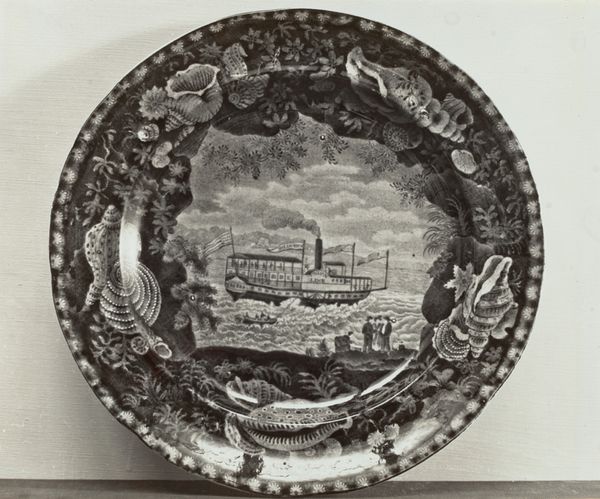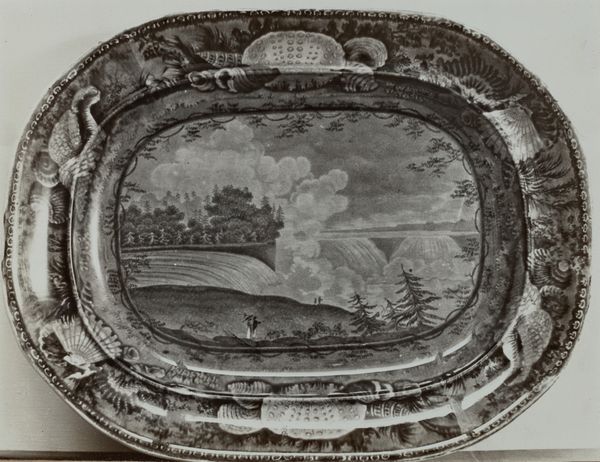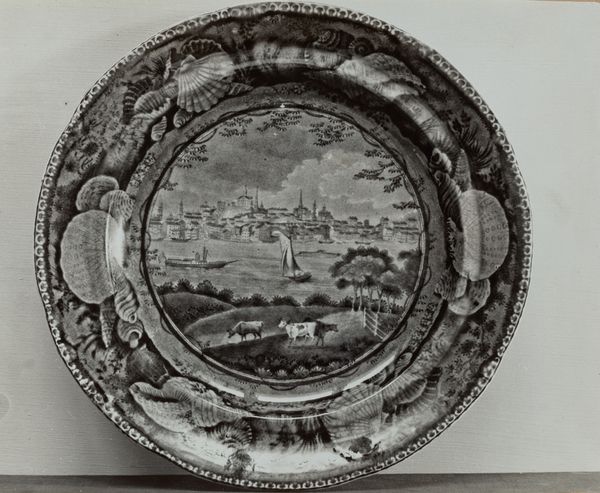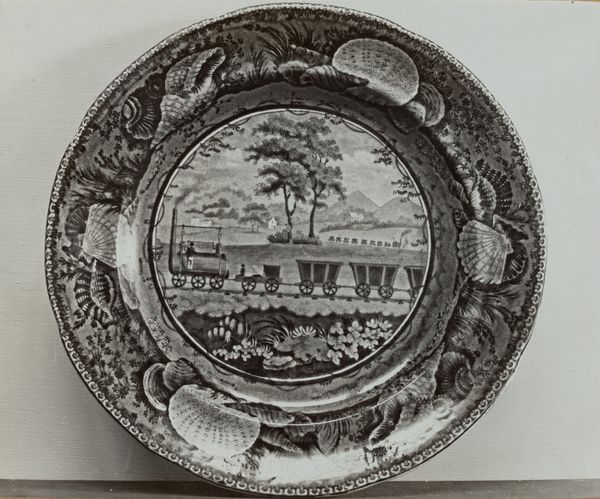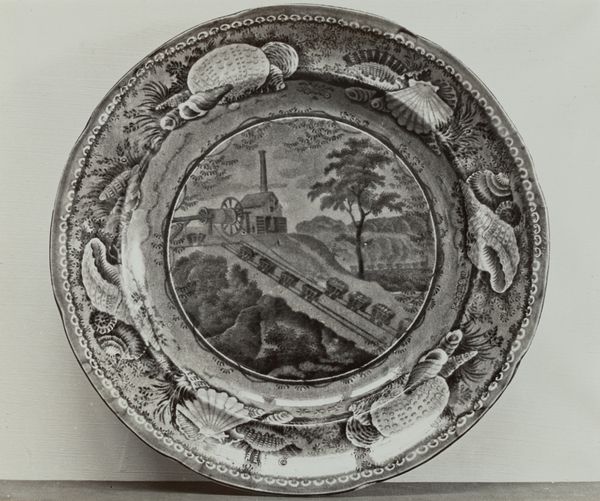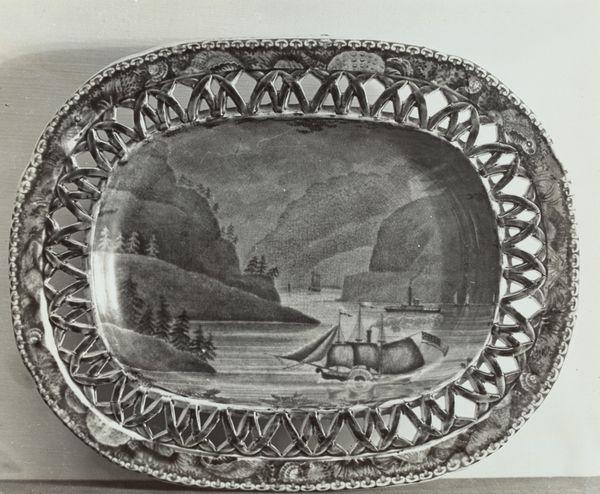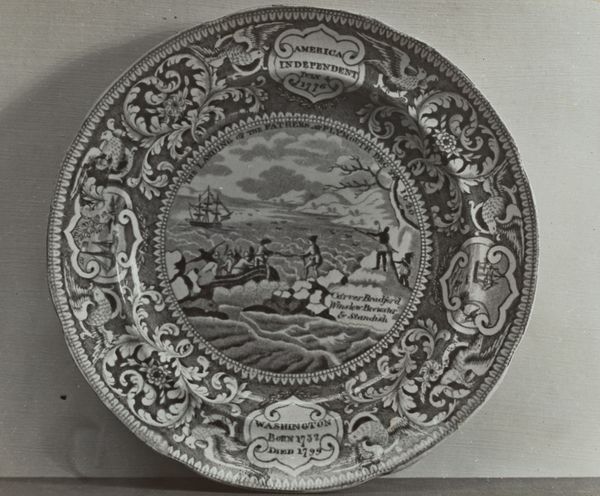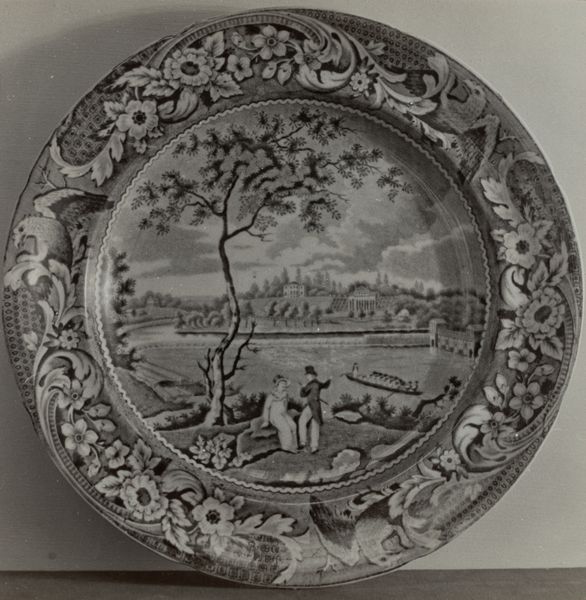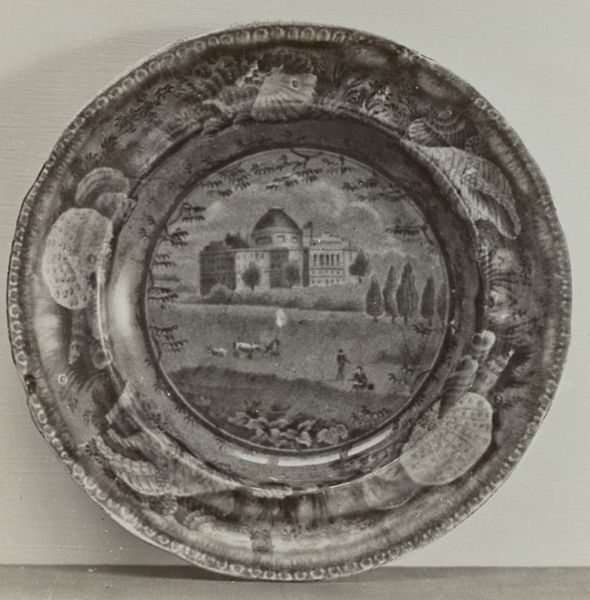
print, etching, ceramic
# print
#
etching
#
ceramic
#
genre-painting
Dimensions: overall: 20.3 x 25.4 cm (8 x 10 in.) Original IAD Object: 10 3/16" in diameter
Copyright: National Gallery of Art: CC0 1.0
Curator: Let’s turn our attention to this ceramic plate. It’s titled “Comm. MacDougal's Victory Plate” and was crafted around 1936. It appears to be an etching printed onto ceramic. What strikes you about it? Editor: It has an old-fashioned, almost documentary feel. A somber palette makes me think about conflict, colonial power, and environmental impact all in one go. Curator: It does present an interesting interplay. On one hand, it commemorates naval victory with this scene of ships at sea, likely celebrating Commodore MacDougal's success. Simultaneously, it situates the event within a framework of shells, seaweed and other natural forms. How do we reconcile what is being promoted with how it is packaged? Editor: The maritime scene depicts ships that are agents of colonial power, shadowed, if you will, by all these artifacts taken from the sea; the framing makes it clear that this victory happens at a cost. I also note that the text “Comm. MacDougal’s Victory” is literally underscored on the plate surface. Is that self-conscious on the artist’s part? Curator: That's astute. In a period fascinated with nationalism, public art served as a means to unify and inspire civic pride. But who truly benefited? Pieces such as this would have appeared in public life, thus perpetuating particular heroic narratives while minimizing others. Editor: Yes, the celebratory naval narrative needs some challenging. It's important to recognize the human cost, environmental impact, and legacy of those victories and question if ‘victory’ is a complete reflection of such an action. Curator: Absolutely. The plate serves not only as an object of display and social narrative, but it serves today to provoke critical discussion. Editor: And I hope the listener will continue this thought experiment, keeping a critical eye on how visual representation can frame events, particularly historical ones. What stories get centered, and at whose expense?
Comments
No comments
Be the first to comment and join the conversation on the ultimate creative platform.

